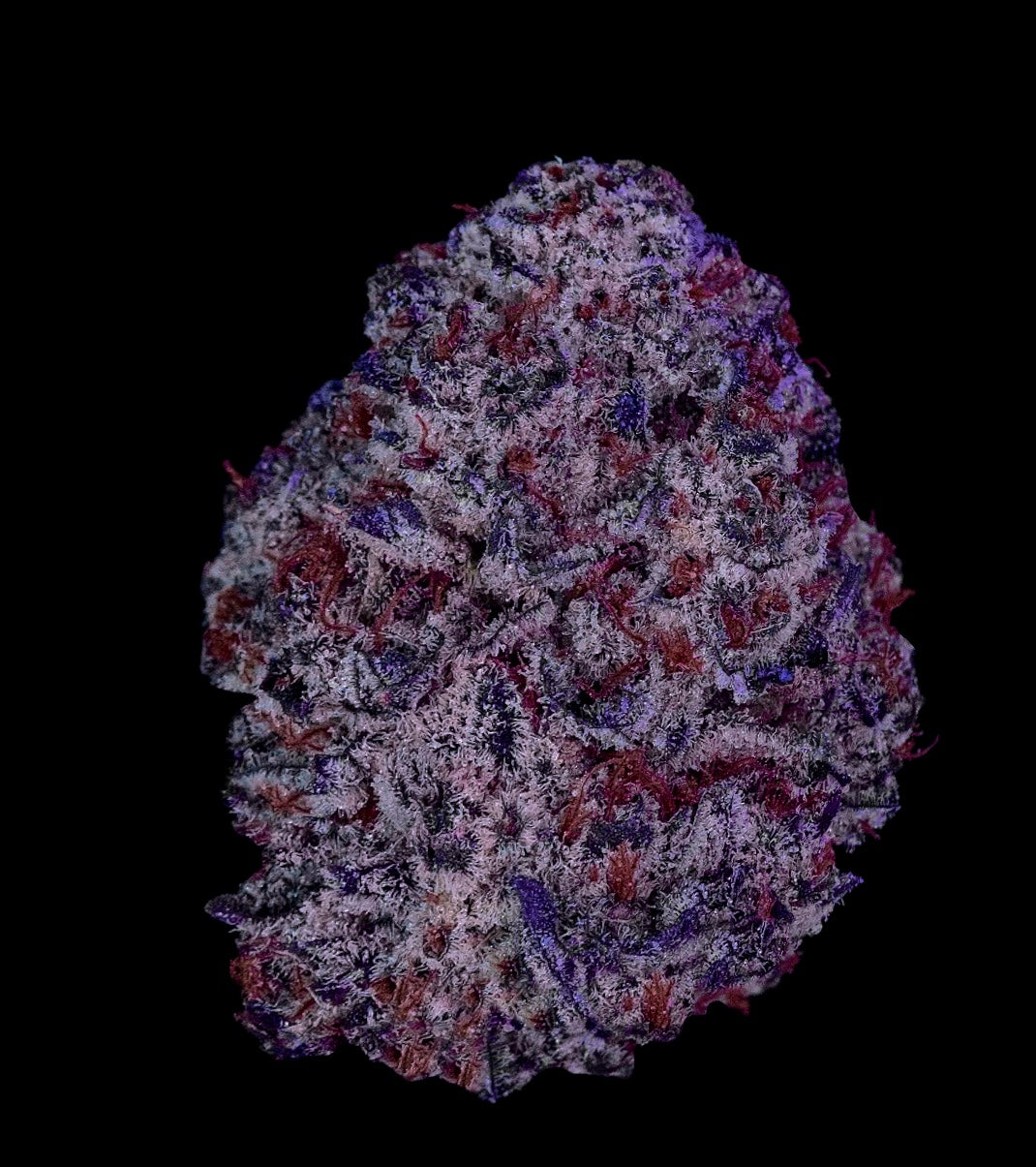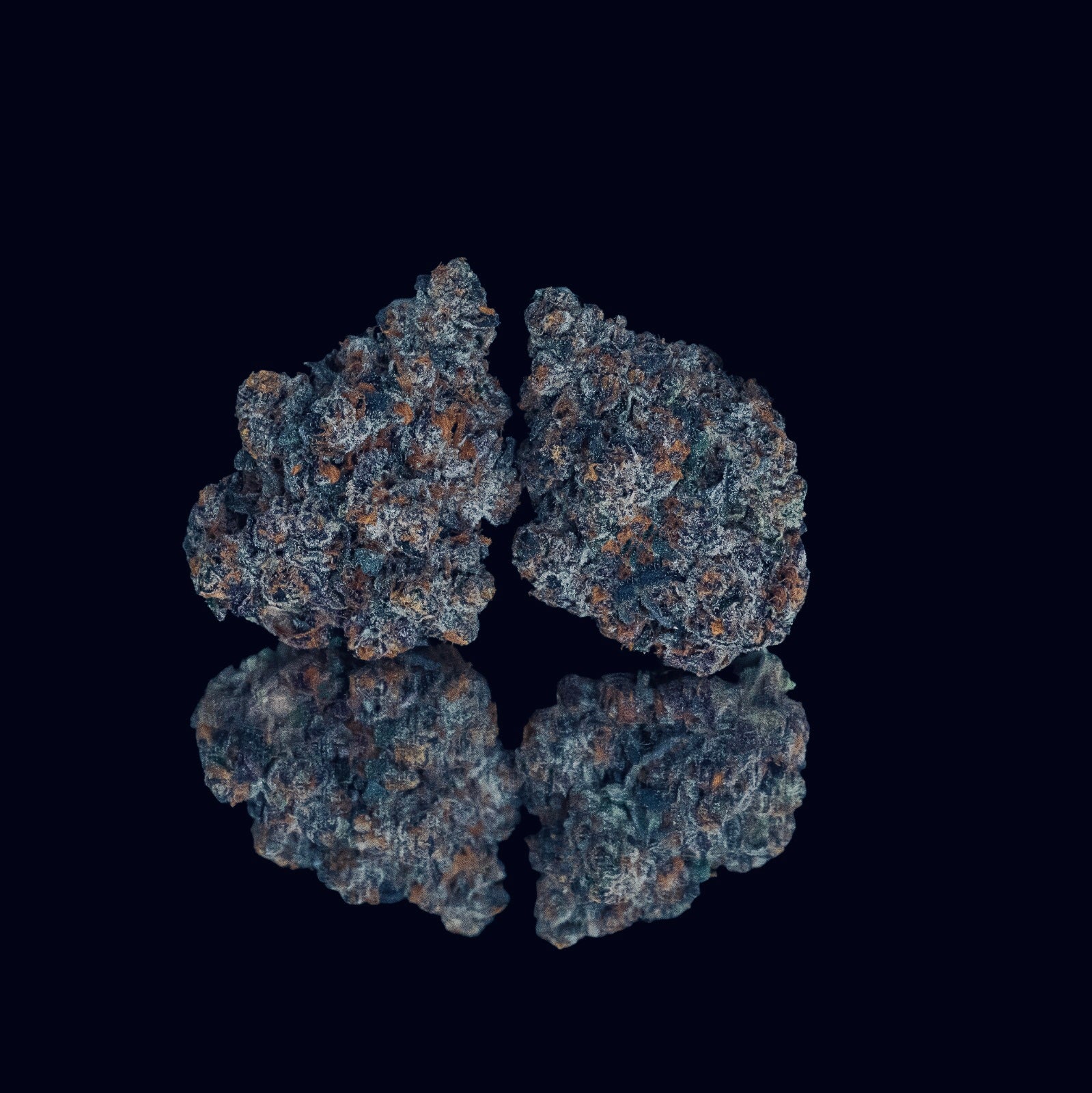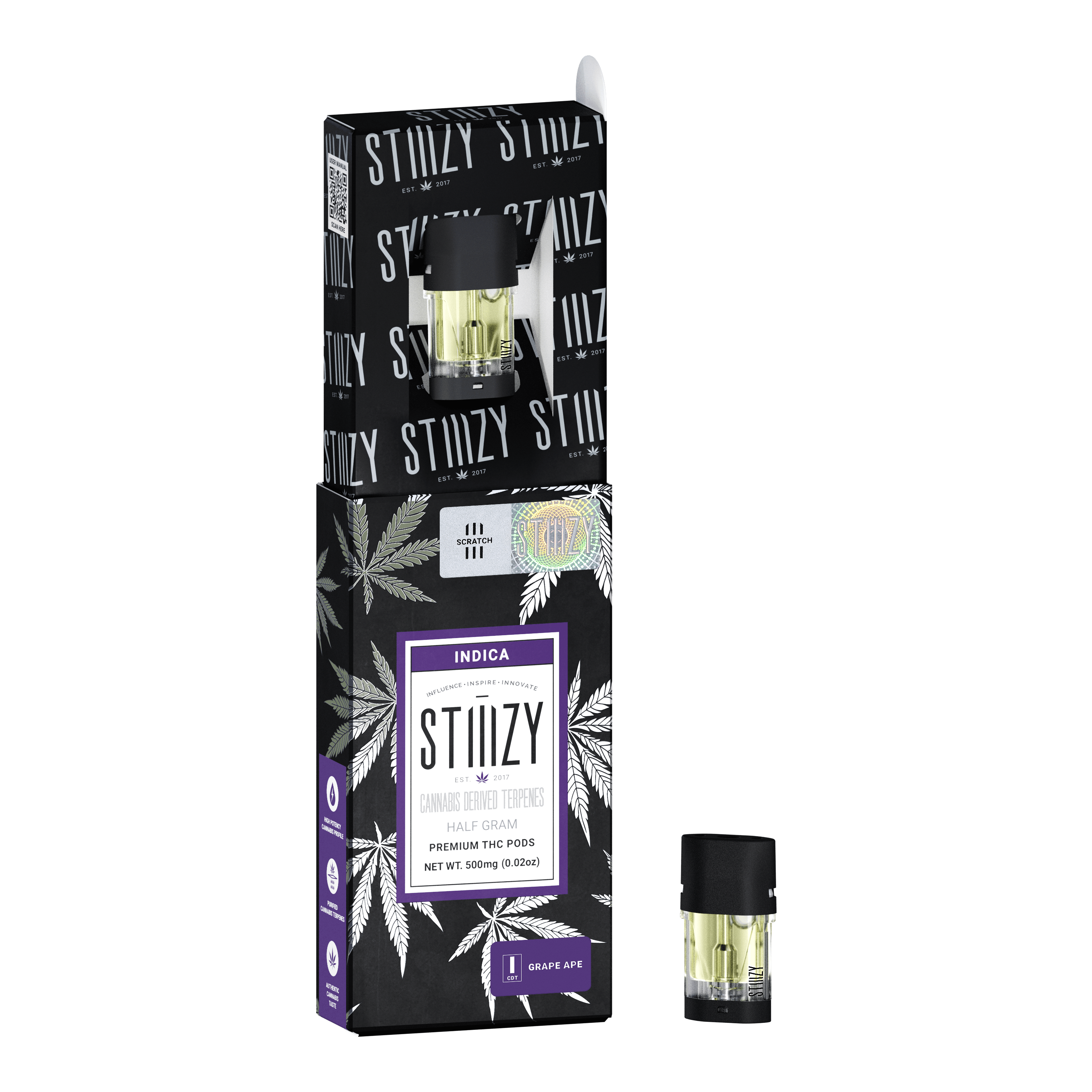THE GREAT GRAPE APE STRAIN: A PURPLE POWERHOUSE
When it comes to cannabis strains, if you love a purple plant with grape flavors, then you might need to rush out and grab some Grape Ape flower or extracts immediately.
Grape Ape’s chunky flowers, as you might expect from the name, have dark purple foliage stacked in with dark green colors. They are also wrapped in orange hairs and bright white trichomes, but all in all, Grape Ape is purple weed. It has tremendous bag appeal.
Here’s what you should know about how this old-school California cannabis strain looks, smells, tastes, and hits.

Grape Ape Strain Origins and Appearance
Also known as Purple Ape, this cultivar is an indica-leaning hybrid that traces its roots to a three-way cross: Mendocino Purps, Skunk #1, and an Afghani landrace. It was originally bred by Apothecary Genetics in the early 2000s, with contributions from the legendary team at Barney’s Farm.
Grape Ape plants grow thick, resinous buds wrapped in violet-hued sugar leaves. The flowering time is typically around 7 to 8 weeks. Its dense structure and vivid coloring make it a top choice for growers who prioritize visual appeal and manageable indoor cultivation. Some phenotypes showcase red and copper-colored stigmas, adding to its complex palette.
This strain has racked up accolades over the years, including back-to-back wins at the Green Cup in 2005 and 2006, and a first-place prize for concentrates at the High Times Medical Cup in 2011.

Grape Ape Terpene Profile and Aromatics
True to its name, Grape Ape gives off a strong grape-forward aroma layered with earthy, herbal undertones. When ground up, the buds release a pungent sweetness mixed with notes often compared to dark fruit and musk.
Its dominant terpenes include:
- Myrcene – Known for its herbal, musky qualities
- Caryophyllene – Offers a peppery spice
- Limonene – Contributes a subtle citrus twist
- Pinene – Adds a fresh, piney note that balances the heavier base
While flavor is subjective and may vary slightly by grower or batch, most users describe the inhale as earthy with hints of fruit and hash.
How Do Consumers Use Grape Ape?
Grape Ape is often picked by users looking for a laid-back evening experience. It’s a cultivar that some consumers say they reach for at night, especially when they want to slow down or relax in a calm setting.
Many note that it provides a noticeable shift in mood, often associated with a sense of stillness or relaxation. Some say they prefer to enjoy Grape Ape while watching a movie, listening to music, or simply winding down after a long day.
That said, everyone’s experience with cannabis can differ based on tolerance, setting, and body chemistry. For those trying Grape Ape for the first time, it’s always best to start low and slow, especially when experimenting with new flower or concentrates.
Growing Grape Ape: Cultivation Tips
Grape Ape is favored by home growers for its resilience and compact growth pattern. It performs well in both indoor and outdoor environments and typically finishes within 7 to 8 weeks when grown indoors.
Key cultivation insights:
- Training techniques like topping and SCROG help improve airflow and yield
- Keep humidity levels in check to avoid mold in its dense buds
- Watch for phosphorus sensitivity during late flower, as overfeeding can reduce terpene retention
- Cooler night temps can bring out more purple coloration during late bloom
Grape Ape offers moderate yields and is considered a relatively low-maintenance option, especially for those familiar with indica-hybrid growth structures.
Phenotypes and Crosses
Over the years, Grape Ape has inspired several notable crosses. Its genetics have been used to create strains like:
- Grape Stomper
- Grape Pie
- Ape Diesel
These offspring aim to enhance traits like resin production, grape-forward aromatics, or unique coloration. Some cuts lean fruitier, while others maintain the earthy, grounded essence of the original Grape Ape.
Legacy Status and Consumer Trends
Grape Ape holds a special place in the hearts of old-school cannabis enthusiasts. It was one of the earliest strains to gain widespread recognition for its purple hues, well before the era of Purple Punch or Granddaddy Purple.
Today, it remains a frequent pick among fans of classic indicas. It also continues to show up in small-batch drops and premium extract lines, particularly in California and Oregon legacy markets.
Post-Harvest Tips for Preserving Quality
Once harvested, curing Grape Ape properly is essential to maintain its rich terpene profile.
- Use humidity packs and air-tight glass jars to cure slowly over 2 to 4 weeks
- Aim for 60 to 65% relative humidity
- Avoid over-handling to preserve delicate trichomes
This helps maximize not only flavor but long-term freshness, which is a must for consumers who purchase larger quantities.
Interested in learning about more cannabis strains? Check out our guides on Gorilla Glue and Lava Cake.
FAQs
Yes, in states where cannabis cultivation is legal, Grape Ape genetics are available through licensed retailers.
STIIIZY complies with all applicable state laws regarding the sale and marketing of cannabis products. This content is intended for adults 21+ in jurisdictions where cannabis use is legal under state law. By engaging with this material, you acknowledge that you are of legal age in your jurisdiction.
This content is for informational and educational purposes only. It is not intended to diagnose, treat, cure, or prevent any disease or medical condition. STIIIZY makes no health claims about cannabis products. Consult a licensed healthcare professional before using cannabis, especially if you are pregnant, nursing, or have a medical condition.
Cannabis products may affect individuals differently. Consume responsibly and avoid operating vehicles or machinery after use. STIIIZY disclaims all liability for any adverse effects, legal consequences, or misuse resulting from the use of our products or reliance on this content.
Cannabis laws vary by state and locality. This content does not constitute legal advice. Users are responsible for understanding and complying with their local regulations.
Statements about product effects or benefits are based on general industry knowledge and user experiences. Individual results may vary. STIIIZY does not guarantee specific outcomes.
References to third-party studies, testimonials, or external resources are provided for context only. STIIIZY does not endorse or validate these materials unless explicitly stated.
The views and opinions expressed in this blog are those of the author and do not necessarily reflect the official policy or position of STIIIZY.


